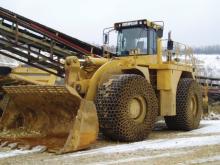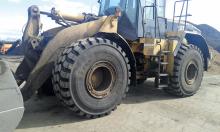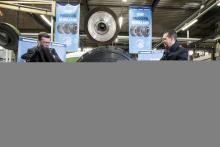
As the effects of the recession continue to place financial strain on those working in the mining and quarrying sector, plant managers must take into consideration product life cycle and project cost per-hour when investing in new or replacement construction vehicles. Here, Lindsay Hart, European tyre sales manager at Titan International, considers the importance of correctly specified tyres for these demanding environments, and how the right tyre should actually lower outlays in the long run
Following a period of economic downturn, certain industries in the UK have begun to demonstrate signs of recovery, with the Welsh construction sector in particular predicted to grow at nearly triple the rate of the nation’s average.
And while the UK mining and quarry industry is yet to see an uplift, the reality is that mineral products and quarrying alone still accounts for 250 million tonnes of annual production. In fact, it is the biggest supplier to the UK’s £120 billion (€153.5 billion) construction industry.
With this comes the need for high-performance, long lasting equipment on-site, such as articulated trucks and earthmovers, which optimise both health and safety, and importantly, long-term cost efficiencies.
Large vehicles, in particular, have become increasingly integral to the sector, with a requirement to carry materials across sometimes difficult terrain, regardless of weather conditions. One inevitable consequence on-site is tyre wear and tear, whether through sidewall cuts from mined material, or poor traction due to conditions linked to weather and terrain.
For this reason, it is crucial that the correct tyre is chosen for the job and the on-site conditions. Adding further complexity to the specification process, tyre wear caused by extreme use is a huge issue in aggressive and demanding environments, with frequent replacement being a major cause of downtime – leading to costly delays on-site.
Tyre service dealers should, of course, be able to advise on the specific tread type (whether earthmover, grader or loader), tread compound, and ply rating to suit your requirements – however it is vital to stay abreast of the latest products available to help alleviate health and safety risks, and optimise site productivity.
As innovation continues at a rapid pace and is injected with higher horsepower, extended lifts and larger bucket capacities, new products such as
LSW tyres feature a lower aspect ratio and smaller sidewall than a standard tyre, resulting in an increased wheel diameter without an increase in the outside diameter of the tyre. This, in turn, results in less side-to-side movement, and therefore increased vehicle stability.
As on-site productivity is a crucial factor in any plant, the LSW tyre puts the driver at an advantage with increased ride quality, breakout force and handling, allowing them to perform their job more confidently. This is especially fundamental to quarry and plants that are often subject to harsh environment and weather conditions.
The perceived upfront cost is obviously a driving factor in tyre selection, but it can often be more effective to look at the cost-per-hour throughout the lifetime of the tyre opposed to initial outlay. Differences in cost are usually associated with quality and tread depth, as well as the ply rating and durability of the sidewall.
Although certain tyres may be slightly cheaper, they are often less robust, and are ultimately prone to cutting or wearing out faster. A tyre that has a lower cost lasts half as long and therefore requires increased vehicle downtime and may not actually pay dividends throughout its life cycle, compared to a slightly more expensive tyre that lasts longer and requires less downtime.
Tyres are always a significant investment, but in demanding environments particularly, it is crucial to remember that without correct maintenance they will not give the expected performance or last as long as anticipated. It is therefore important to incorporate regular maintenance into any tyre lifecycle, in which tread depth and inflation pressure are measured to ensure optimum performance.
Although the mining and quarrying industries face many pressures to become more efficient and reduce costs, it’s important not to forget the fundamentals such as tyre selection, that can help sustain cost efficiencies in the long-term.
Add to the mix more effective LSW options and plant managers can expect to see lower costs, increased productivity and decreased downtime across an entire fleet.









